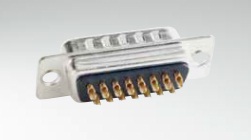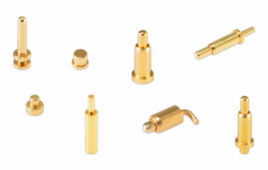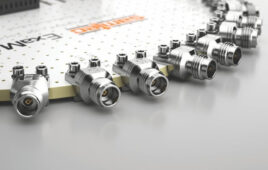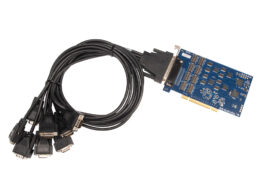You probably don’t know it, but you’ve been referring to most D-sub connectors incorrectly for your entire career. Here’s how to get them right, but you’ll be speaking a language that few understand.
D-Subminiature (D-sub) connectors, you find them in consumer PCs, industrial equipment, and even in networking equipment. They’re everywhere and manufactured by many companies. You’ve probably been referring to them incorrectly for years.

I once worked for a company that manufactured semiconductor process equipment. The Wafertrac moved wafers floating on air from one processing station to another. Each station connected to a dedicated controller board in a chassis through one or more 25-wire ribbon cables (Figure 1). The end of each cable used a DB-25 connector that inserted into the module or controller board. Once inside the module, wires from the ribbon cable then divided, going to other connectors that delivered power, control signals, and sense signals to and from a station.
Instead of ribbon cables shown in Fig. 1, some of the I/O cables routed to the modules were shielded multi-wire cables. They carried, for example, power to a motor. As a result, we went to a DB connector such as the one shown in Figure 2, which has three high-current pins. Typically, the A3 line on the left delivers the power, with two return lines to minimize return-line impedance.

The connectors in Figs. 1 and 2 are “DB” connectors. Why? Because the shell outline looks something like a letter “D.” What about the next letter? Here’s where things do wrong.
The second letter stands for the size of the connector shell. If that’s the case, then why do we often refer to all the D-sub connectors with “DB” as in DB-25, DB-9, and so on? We shouldn’t, but we do.

Look at the rear panel of an older desktop PC in Figure 3. Here, we have three D-subs with three pin configurations and two sizes. You might be tempted to refer to these connectors as DB-9, DB-15, and DB-25. Only the DB-25 is correct. The other two are DE-9 (used for a serial port) and DE-15 (for VGA video). There are five sizes in all, ranging in pins from 9 to 78. The table lays out the connector configuration for connectors that don’t use the large power pins. You can find many online pages that specify these connectors in detail. One such document is “D-Subminiture Talking Dog page” from PEI-Genesis.
| Designation | Number of pins (normal or high-density) | Example configuration |
| DA | 15 or 26 |   |
| DB | 25 or 44 |   |
| DC | 37 or 62 |   |
| DD | 50 or 78 |   |
| DE | 9 or 15 |   |

D-sub connectors attach to cables and to boards. Figure 4 shows a 15-pin solder-cup version of a D-Sub connector while the ribbon cables in Fig. 1 connect by being pressed into the connector pins. Figure 5 shows a board that inserts into a PCIe slot to add eight RS-232/485 ports to a desktop computer. The board’s specification page refers to the eight 9-pin cable connectors as “DB9.” Sorry, but it’s DE9. The “E” side connector, mostly used for 9-pin serial and 15-pin VGA, was developed last. Thus, it’s out of sequence relative to the others.

Filed Under: Connector Tips




